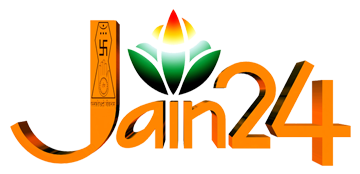Aahar (food intake) of Digambar Muni is one of the most complex process that is being followed in Jainism. Digambar Muni can take food only once in a day and that too in standing posture without using any utensils.
Gesture to indicate that a monk is on his way to take food:
When a Digambar Muni walks on the street to take food, He needs to show the following gesture.
“He goes out with right hand folded at the elbow, with fingers touching the tip of his right shoulder”
This gesture from the Muni indicates that the householder that Muni is on his way to take food. If any shravak is interested, then they can call him to have food.
Nine Steps:
In Digambar tradition there are nine steps (Navadha Bakthi) that need to be followed while offering food to a monk. This process is called as AaharaDhaana.
1. When the Monk passes near the house of Shravak, Shravak invites him by saying, “(I bow)Swami Namostu, (Please come) Atra, Atra, (Please wait) Tisth, Tisth, Tisth”
2. If the monk stops, then the layperson circles the monk three times with full devotion.
3. The monk is requested to come inside the house and take a seat on a wooden plank.
4. The devotees wash the feet of Monk with water and put several drops of water on their own head.
5. The devotees perform puja and bow to the monk.
6. The devotees pray to the monk and say “Swami, My heart is pure and clean”.
7. Devotees say “My speech is pure”
8. Devotees say, “My body is clean and pure”.
9. Devotees say, “The food prepared by us is also pure, please accept it”.
The monks accept the food in his hand and eats while standing.While eating monk ensures that food don’t contain Non-eatables or insects.
Aahar Mudra:
A monk keeps the thumb and the four fingers of his right hand joined together while resting on his shoulder. This is called ahara mudra. If he loses this posture on his way to the host-house-holder he is not supposed to eat on that day. Thus a Digambar Muni can’t free his hands while taking the food.
Why Monk takes food in standing posture?
A Digambar monk eats in standing posture from the hollow of his hands. The standing posture is prescribed because if a monk cannot stand anymore due to old age or illness, the body is to be discarded by fasting till death (called as Salekhana). Thus it indicates whether a monk is physically fit to take food or not. If he is not fit, then he should take “Salekhana”.









